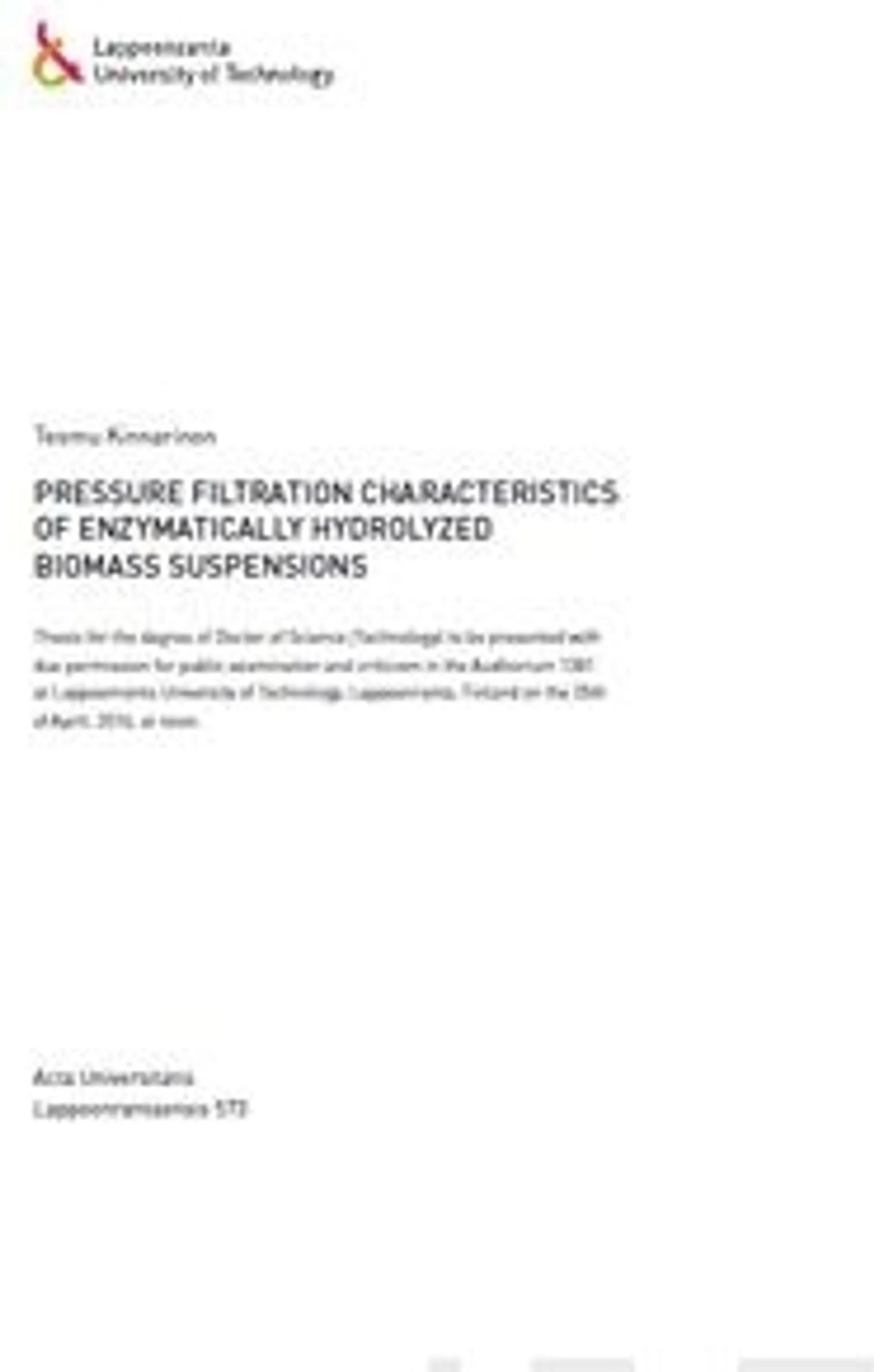Enzymatic hydrolysis of lignocellulosic polymers is likely to become one of the key technologies enabling industrial production of liquid biofuels and chemicals from lignocellulosic biomass. Certain types of enzymes are able to hydrolyze cellulose and hemicellulose polymers to shorter units and finally to sugar monomers. These monomeric sugars are environmentally acceptable carbon sources for the production of liquid biofuels, such as bioethanol, and other chemicals, such as organic acids. Liquid biofuels in particular have been shown to contribute to the reduction of net emissions of greenhouse gases. The solid residue of enzymatic hydrolysis is composed mainly of lignin and partially degraded fibers, while the liquid phase contains the produced sugars. It is usually necessary to separate these two phases at some point after the hydrolysis stage. Pressure filtration is an efficient technique for this separation.
Kinnarinen, Pressure filtration charasteristics of enzymatically hydrolyzed biomass suspensions
Huomaa pidempi toimitusaika
Huomaa pidempi toimitusaika
Tämä kirja on hankintatuote, joten toimitusaika voi olla tavallista pidempi. Arvioitu toimitusaika on noin 7 arkipäivää.
- Ilmainen palautus 30 päivää
- Ilmainen toimitus Postin noutopisteeseen yli 100 € ostoksille.
- Asiakasomistajalle Bonusta jopa 5 %.
Oletko tyytyväinen tuotetietoihin?
Ovatko tuotetiedot riittävät? Jos tuotetiedoissa on puutteita tai niitä voisi muuten parantaa, anna palautetta.
